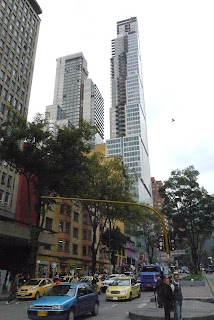 |
| Location of La Colosa mine in Tolima department. |
After all, the mine would have brought investment and jobs to the region, albeit with a big environmental cost.
To the credit of the South African-based company's credit, a few days ago it suspended operations at La Colosa, despite insistence by the Ministry of Mines and Energy that the referendum was merely symbolic. That decision ended 400 jobs, according to the company.
"It's a positive sign for democracy," Renzo García, of The Committee in Defense of Water, told the El Espectador newspaper.
 |
| The site is estimated to contain more than 30 million ounces of gold. |
But would the end of this mine, estimated to contain 30 million ounces of gold, be a clear win for the environment?
Undoubtedly, a huge mine like this one would destroy a huge surface area and consume and pollute lots of water. And its trucks and machines would pump lots of dirty gases into the atmosphere.
But what is the alternative? If these 30 million ounces of gold aren't produced by La Colosa, gold supplies will be lower and prices will rise a bit worldwide. That will incentivize gold mining elsewhere - including much more destructive illegal mines.
 |
| Illegal gold mining in El Chocó devastates rivers and poisons miners and even townspeople. Photo: El Tiempo |
All of which is not to say that the La Colosa mine would be a positive thing - but at least to ask the question.
 |
| Illegal mining's environmental devastation. Photo: Semana |
By Mike Ceaser, of Bogotá Bike Tours














